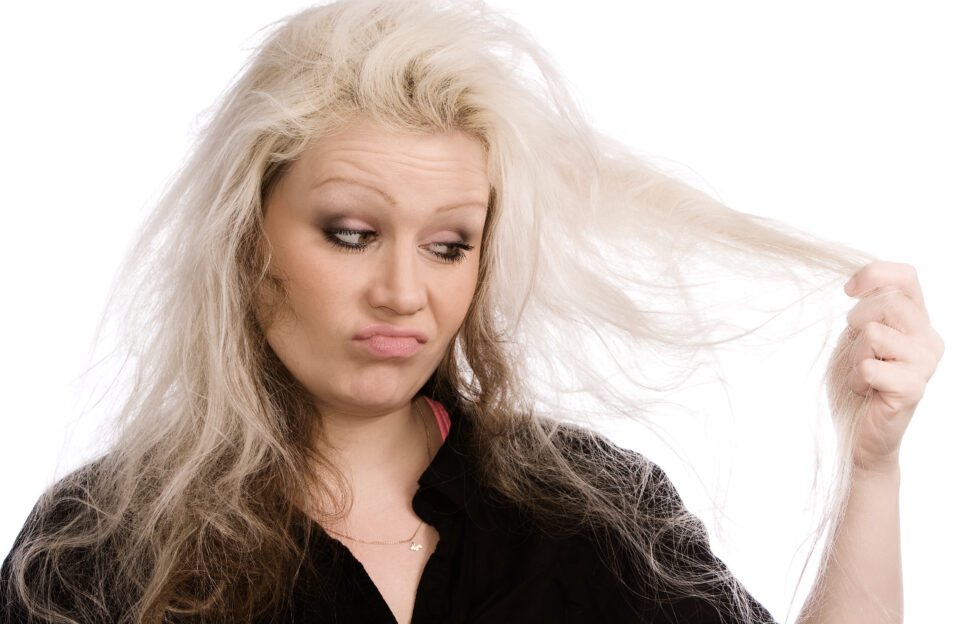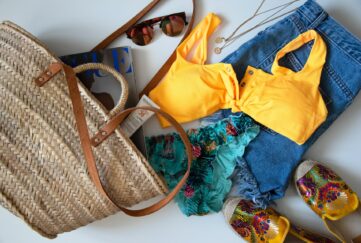5 Ways To Deal With Frizz

One of the most popular hair searches on Google is, how to deal with frizz, according to stylist to the stars Michael van Clarke
Here are the five main reasons that hair appears frizzy – and Michael’s fixes.
1. Multidirectional Hair
The hair may or may not be healthy from root to tip, but the curl or wave makes the strands behave wayward and multidirectional. Think cotton wool as opposed to cotton thread. Same material – but in thread, the fibres all lay in line and in the wool it’s spaghetti mayhem. This will create a frizzy effect with hair.
The solution is to get the hair laying in line which may be by blowdrying smoother. A round bristle brush will get hair much smoother, but needs a little more skill. The easier to use short plastic bristle brushes (often around a metal base) generally don’t have enough tension to smooth, so the hair may become straighter but stays a little frizzy or the frizz returns sooner.
Or We use a styling product to hold the hair in place while it dries. We start with LifeSaver UV on the wet hair. This stops the hair shaft expanding and going fluffy, and also keeps the hairs in line. Once dry we use a little Ten Second Transformation. This nourishing product further seals the cuticle and smooths any strays. Magic Oil is also an aid on both wet and dry hair.
It’s a good example of layering products. The LifeSaver UV is light and fine enough to travel deep. It repairs and hydrates at the core. The heavier Ten Second Transformation can then make the final seal on the cuticle and smooth into line the odd frays and strays.
2. Lifted Surface Cuticle
As the hair ages and the inner structure breaks down, the surface cuticle will lift away creating a rough frizzy effect. Repeated ‘dehydration moments’ will have weakened the structure causing a breakdown in the protein bonds leading to a raised cuticle becoming the natural state. You may find your hair easy to comb at the roots but it snags at the ends especially when wet. This is where conditioners are so important after the shampoo, to smooth the cuticle back down and give protection.
A quick solution to rough feeling hair is to varnish it in plastic or silicone, but that creates further dehydration that speeds up the breakdown of the core, so I don’t recommend this. It also builds up on the hair, creating a surface barrier that limits treatments going deep to properly repair and protect.
Silicone had a heyday in the 1990s when GHD brought out the first really effective flat irons and fashions went along with dead straight dead flat hair. Silicone helped here because it also killed movement and flexibility, though it also left the hair feeling like nylon under the weight of all the silicone.
Roll forward to current fashions and people want more wave or at least natural looking body. The silicone-rich products are making this difficult as whilst they make the surface smoother they also kill wave and flexibility, limiting the ability of the hair to hold a curl.
3. Decaying Hair
Losing weight from the structure leaves the ends much lighter and the surface cuticle much rougher. These shorter newer hairs or broken split hairs then lift away from the smooth grain of the rest of the hair causing a cloudy halo. It’s then a short step from floaty flyaway to fluffy frizzy.
Keeping the hair regularly nourished and protected helps the hairshaft retain more of its natural structure. This way the ends stay weightier as the ageing process slows down. Less thinning, less breakage, less splitting and less frizzy flyaways. LifeSaver Pre-wash Treatment is our go-to regular care product. Nothing else we’ve tried comes close for long term hair health.
4. Dry Ends
Hair will dry out more from the tips as it’s here that the most protein structure is missing, so the hair will struggle to retain moisture. Use a feed on dry hair to keep tips moisturised and sealed, like a little neat LifeSaver, Magic Oil or Ten Second Transformation
Sometimes its better to remove the driest hair then keep tips trimmed regularly to stop the style showing a cloudy dry halo.
5. Uneven Layering
A poor haircut will make hair look frizzier. If the ends aren’t cleanly cut and balanced, the layers won’t fold into each other, leaving jagged ends sticking out irregularly and giving a dry frizzy look.
Recap
Anything that depletes the hairshaft will age it quicker meaning hair will naturally become drier and frizzier looking. Aim to minimise the damage by using better techniques to style and colour your hair. Stay protected in the sun and sea and regularly feed back into the hair with a pre-wash treatment.




